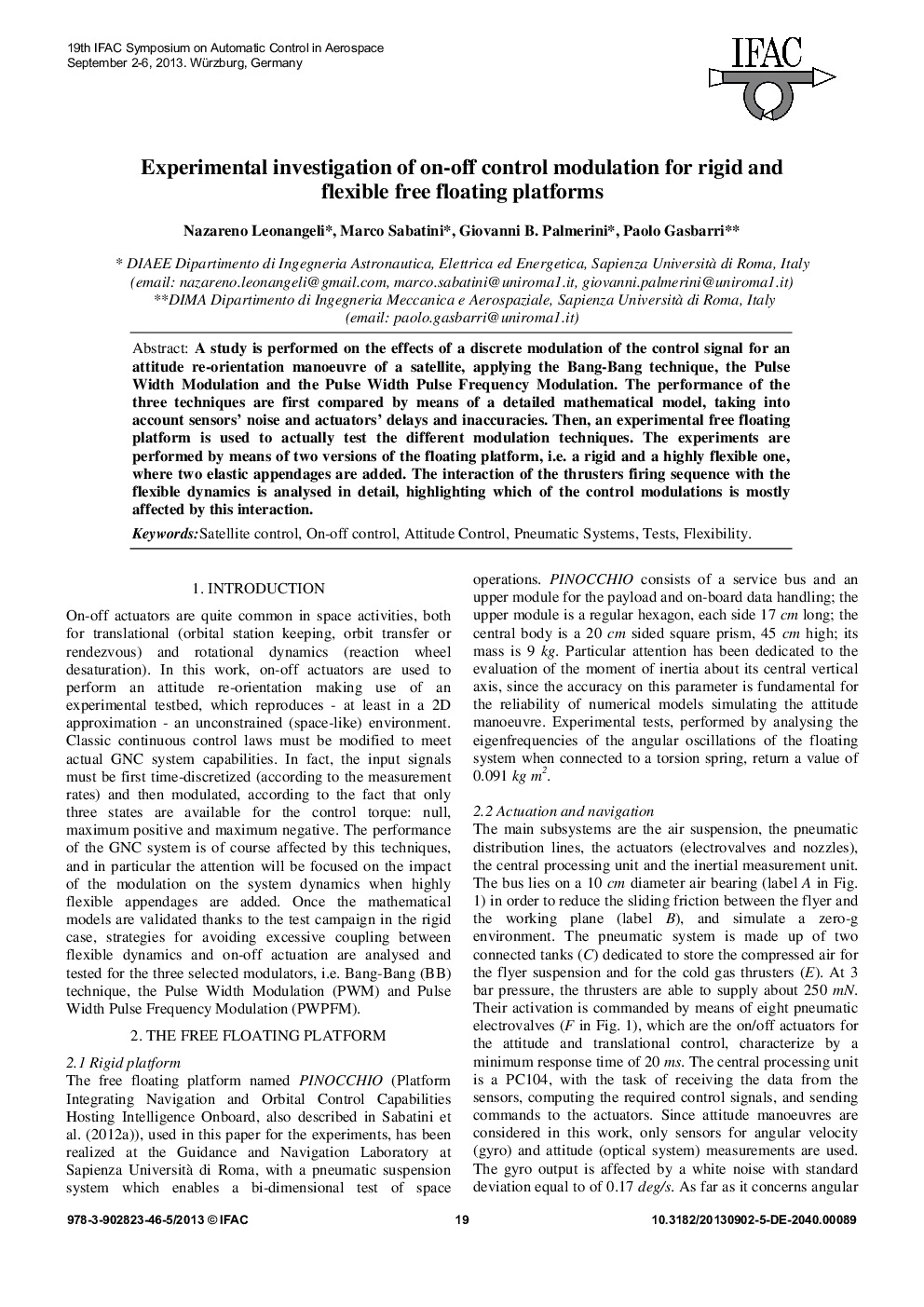| Article ID | Journal | Published Year | Pages | File Type |
|---|---|---|---|---|
| 709129 | IFAC Proceedings Volumes | 2013 | 6 Pages |
A study is performed on the effects of a discrete modulation of the control signal for an attitude re-orientation manoeuvre of a satellite, applying the Bang-Bang technique, the Pulse Width Modulation and the Pulse Width Pulse Frequency Modulation. The performance of the three techniques are first compared by means of a detailed mathematical model, taking into account sensors’ noise and actuators’ delays and inaccuracies. Then, an experimental free floating platform is used to actually test the different modulation techniques. The experiments are performed by means of two versions of the floating platform, i.e. a rigid and a highly flexible one, where two elastic appendages are added. The interaction of the thrusters firing sequence with the flexible dynamics is analysed in detail, highlighting which of the control modulations is mostly affected by this interaction.
